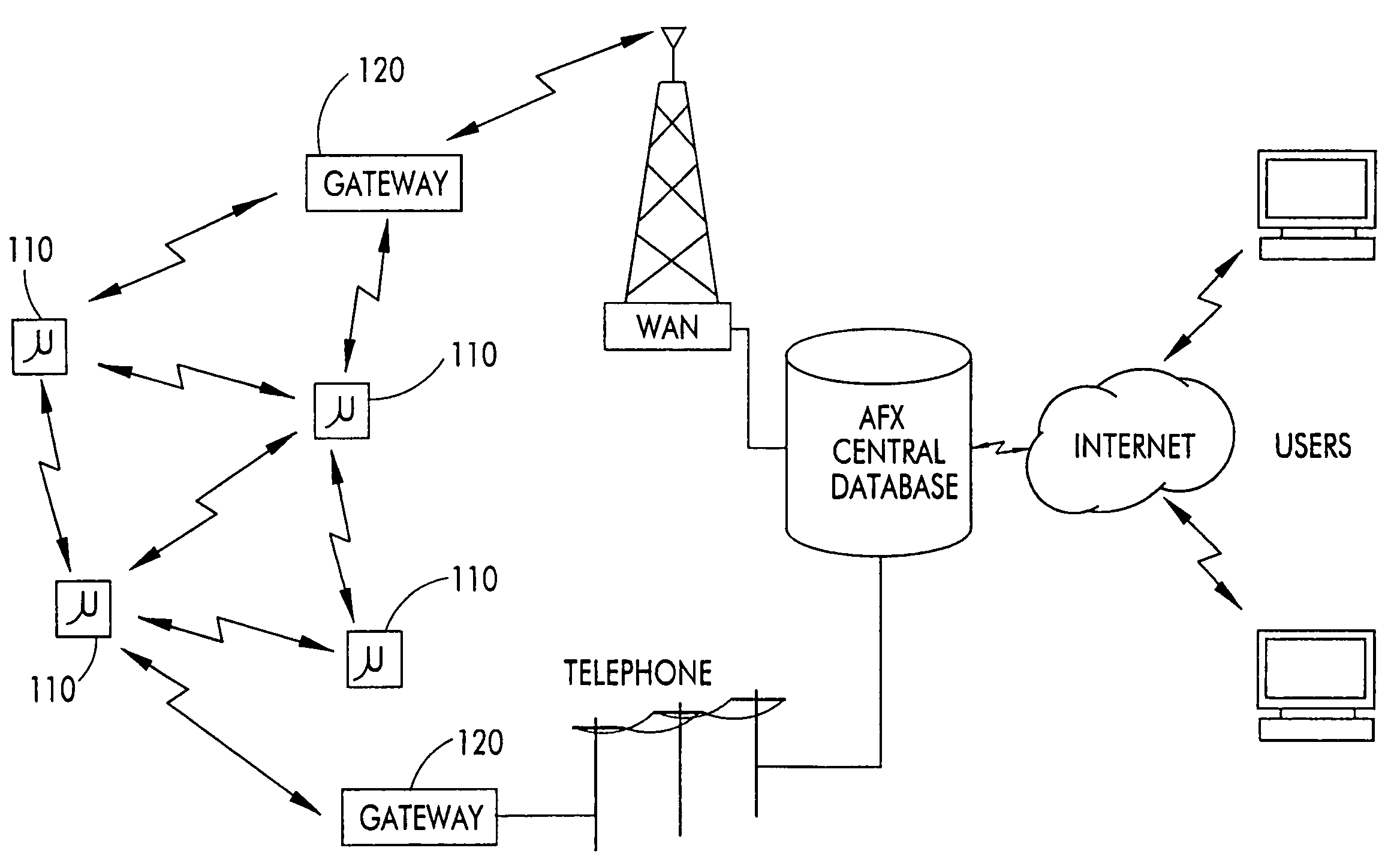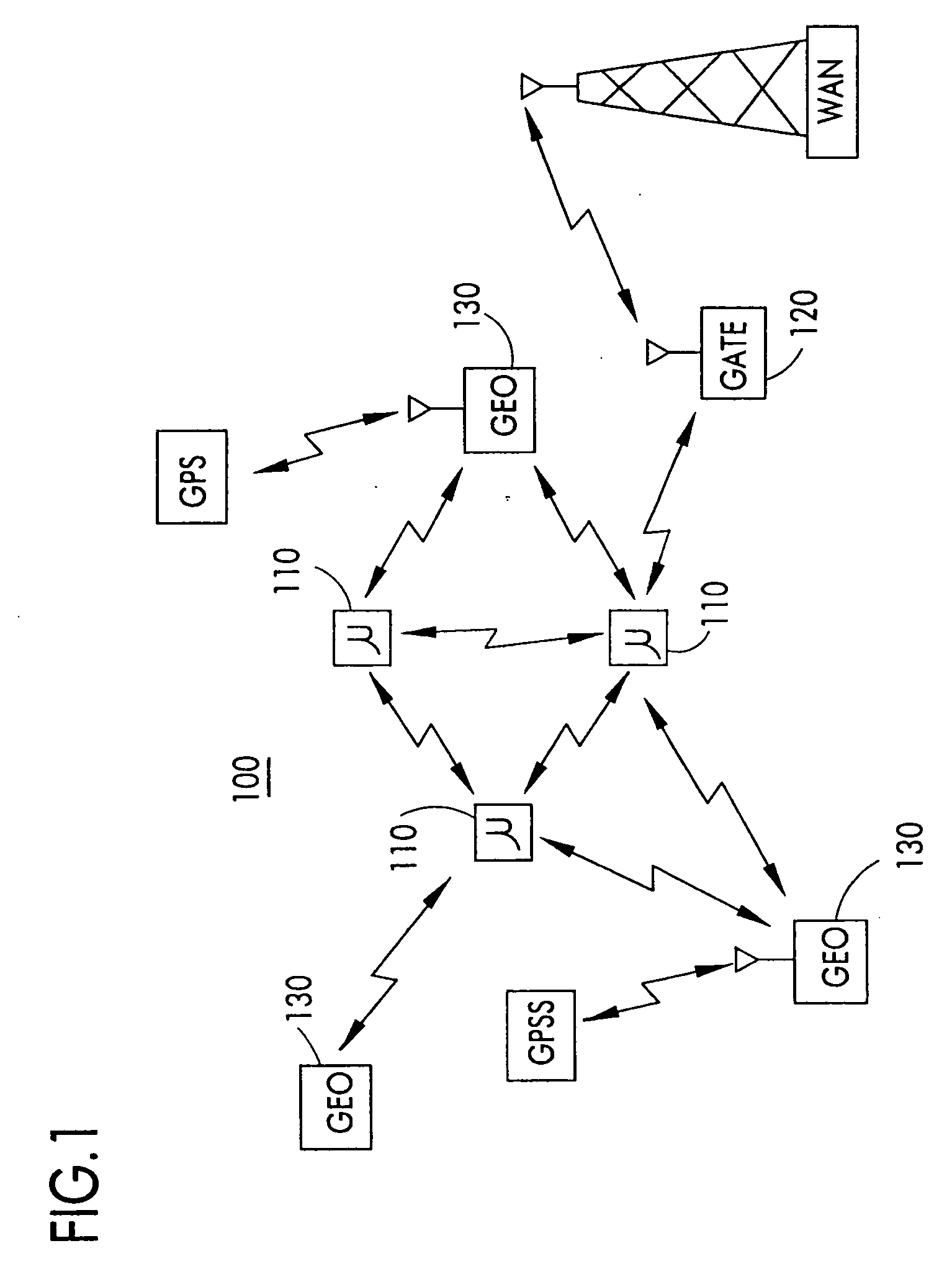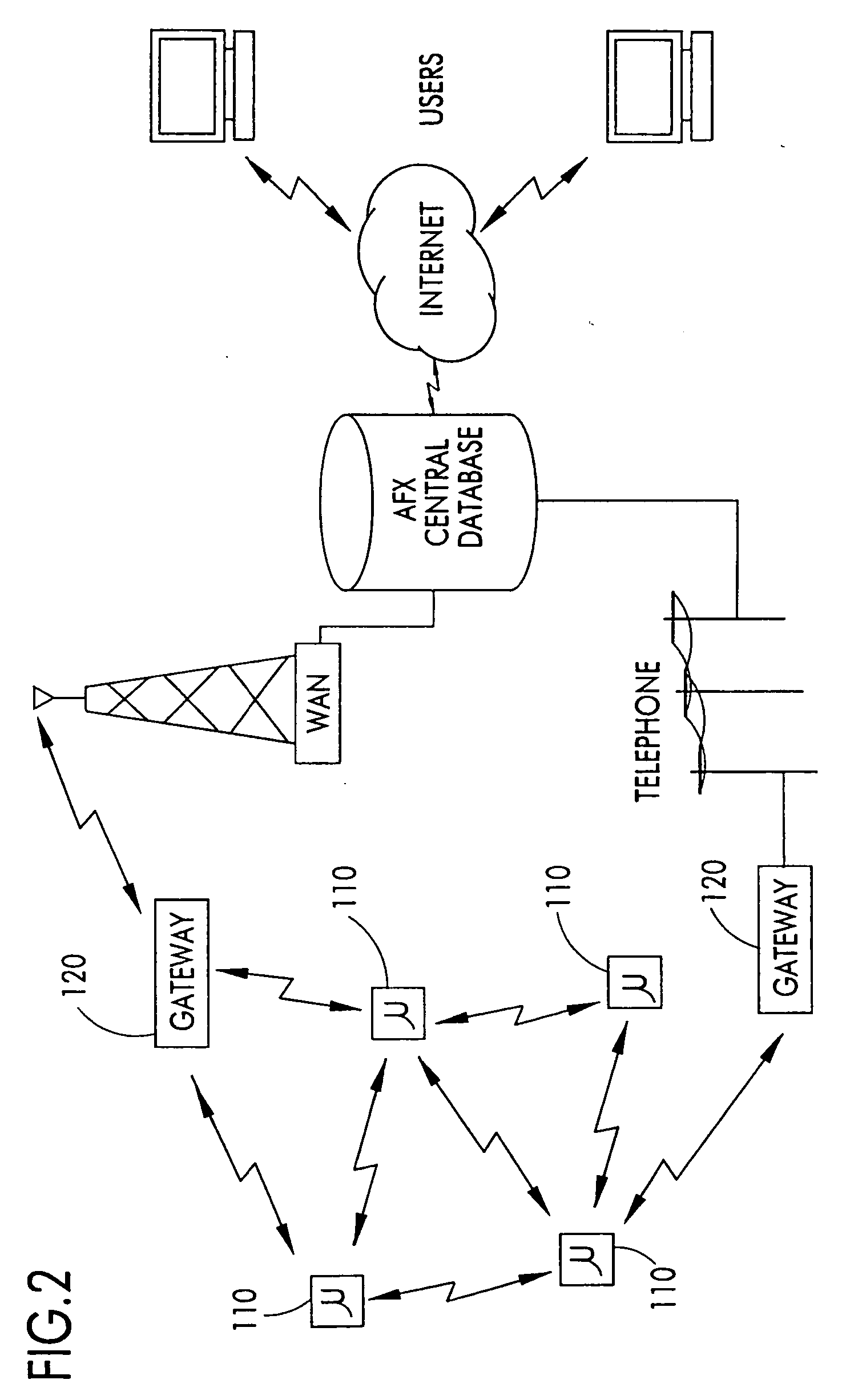Node-to node messaging transceiver network with dynamec routing and configuring
a messaging transceiver and routing technology, applied in the field of multi-level networks, can solve the problems of complex networks, inability to cost justify many more potential applications using this technology, and high equipment and airtime costs of real-time connections
- Summary
- Abstract
- Description
- Claims
- Application Information
AI Technical Summary
Benefits of technology
Problems solved by technology
Method used
Image
Examples
Embodiment Construction
[0040] The MinionNet™ Network 100 as illustrated in FIGS. 1 and 2 is a wireless data network characterized by short-range device-to-device messaging. (Minion™, MinionNet™, μMinion™, muMinion™, microMinion™, gatewayMinion™, geoMinion™ and cap™ are trademarks of the assignee. As used hereinafter, Minion device means Minion™, MinionNet™, μMinion™, muMinion™, microMinion™, gatewayMinion™, and / or geoMinion™, unless otherwise specified. The trademark designation “™” will not be used hereafter for convenience.) Messages are automatically routed through multiple device-to-device “hops” to provide robust area coverage, redundancy, noise immunity and dynamic routing and reconfiguration. These device-to-device messages do not have a time-critical requirement such as would be found in a real-time voice connection such as a cellular telephone net.
[0041] The devices used by the MinionNet network 100 are generally referred to as Minion devices and are actually extremely inexpensive two-way data r...
PUM
 Login to View More
Login to View More Abstract
Description
Claims
Application Information
 Login to View More
Login to View More - R&D
- Intellectual Property
- Life Sciences
- Materials
- Tech Scout
- Unparalleled Data Quality
- Higher Quality Content
- 60% Fewer Hallucinations
Browse by: Latest US Patents, China's latest patents, Technical Efficacy Thesaurus, Application Domain, Technology Topic, Popular Technical Reports.
© 2025 PatSnap. All rights reserved.Legal|Privacy policy|Modern Slavery Act Transparency Statement|Sitemap|About US| Contact US: help@patsnap.com



